Coach Travel Chest in Leather and Wood – 18th Century – Île de France – [ME124]
The vanity one carries with them in the 18th century is made from leather, brass, and wood. These natural materials were assembled by the guild of trunk makers, with no recourse to plastics which of course did not yet exist. Let’s rediscover the charm of yesteryear’s luggage with this delicate coach travel chest in leather, brass, and wood, a surviving witness of the Renaissance’s golden days in France.


![Globular Melard with Spout – 18th Century – Puy de Dôme – [PA088] This globular mélard with pinched spout, an intermediary size between the large mélard and the oil jug, was meant to be suspended. Its base is rounded for this purpose, to ensure the attachment of a rope without sharp angles. The rope passing under the bottom was held from bottom to top against the pottery's belly by another transverse rope passing under the specially flared neck. The whole was suspended from a beam resembling a joist. This mélard is covered with a green glaze and a lead cover, two finishes intended to provide it with brilliance and waterproofing. Its decoration consists of finger-molded bands. The facade is adorned with a cross motif placed under the pinched spout. This reduced spout allowed for a faster, smoother flow.](https://www.aux-rois-louis.com/wp-content/uploads/2024/02/PA088_P1680256-600x600.webp)
![Studded Travel Trunk – 18th Century – China – [ME126] This studded travel trunk originates from the mountainous region of Hubei, also known as the Province of a Thousand Lakes, situated in central China. The ochre and green hues that surface are original. Upon closer inspection of the facade, vertical inscriptions in Chinese characters can be discerned. The rings are loops for the ropes that allowed this travel trunk to be carried through the rugged mountains of Hubei, either by man or mule. The studded iron fittings reinforcing its corners enabled it to withstand shocks and reach us in a beautiful state of preservation.](https://www.aux-rois-louis.com/wp-content/uploads/2024/02/ME126_P1680293-600x600.webp)
![Polychrome Walnut Virgin with Serpent – 18th Century – Midi-Pyrénées – [ME116] Polychrome Walnut Virgin with Serpent – 18th Century – Midi-Pyrénées – [ME116]](https://www.aux-rois-louis.com/wp-content/uploads/2023/10/ME116_P1670078-600x600.webp)
![Cherry Wood Salon Table – Louis XIV – 18th Century – South West – [ME112] Here is a small cherry wood salon table commissioned by a castle in Périgord in the 18th century. It follows the codes of the Louis XIV style, featuring a moulded balustrade base connected by an H-shaped stretcher and blackened mouldings on the side rails. It has a drawer that spans its entire width.](https://www.aux-rois-louis.com/wp-content/uploads/2023/09/ME112_654-600x600.webp)
![Little Gilded Wooden Mirror – Louis XIV – 18th century – Midi Pyrénées – [ME 110] This little Louis XIV gilded mirror illustrates the savoir-faire of 18th century miroitiers, guillocheurs, stuqueur and gold leaf gilder. It will bring happiness in a secret boudoir where it will have the place of honor.](https://www.aux-rois-louis.com/wp-content/uploads/2023/12/ME110_P1660637-600x600.webp)
![Inseparable salt and flour boxes in walnut - 18th century - Provence - [MP025]](https://www.aux-rois-louis.com/wp-content/uploads/2021/11/MP025_153x900-600x600.jpg)

![Light Oak Medallion Chest – 18th Century – The Vosges – [MP041] Here is a light oak chest dating back to the 18th century. Its imposing central medallion encompasses the top and bottom crossbars. It is surrounded by two panels adorned with flowers. The heartwood oak planks from the Vosges forests chosen to make it have endured four centuries without the slightest damage. This wedding chest is simply resplendent.](https://www.aux-rois-louis.com/wp-content/uploads/2023/08/MP041_P1660542-600x600.webp)
![Floral Cherrywood Buffet – Louis XV – 18th Century – Rhone Valley – [MP044] This floral cherrywood buffet, crafted in the 18th century in the Rhone Valley, celebrates the Louis XV style in a most graceful manner. We refer to it as 'floral' due to the unusual abundance of floral motifs adorning each door and every drawer, creating a mirror-like effect.](https://www.aux-rois-louis.com/wp-content/uploads/2023/08/MP044_P1660577-600x600.webp)
![Gilded Wooden Rococo Mirror – Louis XV – 18th Century – Provence – [ME111] Curves, volutes, and Saint-Jacques shells – everything exudes the essence of Provence and the pure Louis XV style in this gilded wooden rococo mirror, resting upon two elegant feet. It dates back to the 18th century and has reached us in a remarkably preserved condition. Its mercury glass and wooden frame adorned with gold leaf gilding in the Armenian style are original.](https://www.aux-rois-louis.com/wp-content/uploads/2023/07/ME111_P1660642-600x600.webp)
![Natural Oak End-of-Bed Chest – 18th Century – South West – [MP046] Offered as part of the bride's dowry by her father, this natural oak chest adorned with tulips and a country bouquet served two purposes in the 18th century: to hold the personal effects of the young bride and to allow the couple to sit at the foot of their bed in complete intimacy. Hence its name "end-of-bed chest."](https://www.aux-rois-louis.com/wp-content/uploads/2023/06/MP046_589c-600x600.webp)
![Wedding Chest in Larch Wood – 18th Century – Haute-Loire – [MP048] Voici un authentique meuble auvergnat, témoignage de l’art populaire tel qu’il Here is an authentic Auvergne piece of furniture, a testament to the folk art as it manifested itself in the 18th century in the southeastern part of the Massif Central. This is a wedding chest assembled with thick larch wood planks, adorned with naive ornamentation inspired by the stylistic repertoires of Louis XIII and Louis XIV.](https://www.aux-rois-louis.com/wp-content/uploads/2023/07/MP048_P1660628-600x600.webp)
![Two Twisted Walnut Columns – 18th Century – Midi-Pyrénées – [ME105] Here are two impressive twisted walnut columns from the 18th century. Initially, they adorned the base of the monumental staircase in a public building located in the Midi-Pyrénées region. Now, they are prepared to enhance the charm of a film set or a private residence.](https://www.aux-rois-louis.com/wp-content/uploads/2023/07/ME105_P1660601x1200-600x600.jpg)
![Musician’s Lectern in Walnut – Late 18th century – Southwest region of France – [ME109] Here is an antique musician's lectern made of walnut from the 18th century in the Southwest region of France. It features a double openwork music stand resting on a solid wooden tablet, which contributes to its stability. Its base consists of three legs arranged in the manner of tree roots, ensuring its balance.](https://www.aux-rois-louis.com/wp-content/uploads/2023/07/ME0109_P1660615-600x600.webp)
![‘Le saut de l’Ange’ – Oil on canvas – 18th century – Italy – [ME102] ‘Le saut de l’Ange’ – Oil on canvas – 18th century – Italy – [ME102] – This oil on canvas painting from 18th century Italy, titled "Le saut de l'Ange," is associated with Baroque aesthetics. The painter plays with the effects of light and contrasts of chiaroscuro. The depth is not solely based on rigorous geometric perspectives and straight lines. The impression of movement is conveyed through the very expressive gestures of the characters, communicating through their gaze. This painting shows us the efforts of a love-stricken suitor to seduce his beloved and the probable fall of a figure in the background, near a precipice. Can falling in love lead to falling from a great height? This seems to be the allegorical question that the artist is asking us.](https://www.aux-rois-louis.com/wp-content/uploads/2023/02/ME102_P1660563-600x600.webp)
![Louis XVI cherrywood jump chest from the 18th century – South West of France – [ME086] This Louis XVI chest of drawers is referred to as a "jump chest" due to its unusual height of its feet. Originating from the Provinces located in the South West region of the Kingdom of France, Guyenne and Gascony, this unique, sturdy and refined piece was made in the 18th century from thick cherrywood boards.](https://www.aux-rois-louis.com/wp-content/uploads/2023/01/ME086_P1660303-600x600.webp)
![Oak Farm Table – 18th century – Auvergne – [MP040] The cat bar on this Auvergne farmhouse table is notoriously raised and plush.](https://www.aux-rois-louis.com/wp-content/uploads/2022/12/MP040_501-600x600.webp)

![Walnut drop-leaf writing desk – 18th century – Périgord – [ME090] Drop-leaf secretary made in Périgord in the 18th century in beautiful walnut boards. It is composed of a crossbow chest of drawers with two large drawers, surmounted by a sloping flap that opens to become a writing desk.](https://www.aux-rois-louis.com/wp-content/uploads/2022/12/ME090_P1660457b-600x600.webp)
![Kettle, pie dish and decaliter jug in red copper – 18ᵉ century – South West – [MP035] [MP036] [MP037] Three copper containers of exceptional size: an enormous kettle, the matching pie dish and an equally imposing pitcher. All are in red copper and date from the 18th century, a period during which they were manufactured using the same processes in the South West of France.](https://www.aux-rois-louis.com/wp-content/uploads/2022/10/ME035-036-037_426-600x600.webp)
![Mélard in White Clay and Suspended Mélard – [PA073] [PA074] – 18th century – Cantal Two walnut oil jugs, fuel used in the 18th century for lighting. The mélard on the left is in raw white clay on which concretions come from the interior. The mélard on the left benefited from a water-green glaze which made it waterproof. Its two handles allow it to be hung on a rope to be able to lean it and thus facilitate the flow of oil.](https://www.aux-rois-louis.com/wp-content/uploads/2022/10/PA073_PA074_P1660311-600x600.webp)
![Country chest of drawers in cherry wood – 18ᵗʰ century – Périgord – [ME080] Chest of drawers in cherry wood with four drawers on its curved front, two large at the bottom and two smaller at the top placed side by side. It was made in Périgord in the 18th century in thick cherry boards and rests on two scrolled legs at the front and two straight legs at the back.](https://www.aux-rois-louis.com/wp-content/uploads/2022/09/ME080_P1660186-600x600.webp)
![Chest of Knight in walnut – 18ᵗʰ century – Périgord – [ME081] Large walnut chest with straight lines ordered and shaped in the County of Périgord in the 18th century. This geographical origin is attested by a typically Périgord motif of an inverted V which houses the keyhole. The ironwork, lock, hinges and handles are all original.](https://www.aux-rois-louis.com/wp-content/uploads/2022/08/ME081_253-600x600.webp)
![Small two-piece walnut sideboard – 18ᵗʰ century – South West France – [ME073] Small two-piece sideboard made in the 18th century in the South West of France. It has a cornice, a picture rail and two largely molded drawers, four doors decorated with diamond points and it rests on two straight feet at the back and two onion feet at the front.](https://www.aux-rois-louis.com/wp-content/uploads/2022/08/ME073_P1660102n-600x600.webp)
![Oak farm table – 18ᵗʰ century – Cantal – [MP031] Oak farm table – 18ᵗʰ century – Cantal – [MP031]](https://www.aux-rois-louis.com/wp-content/uploads/2022/08/MP031_093-600x600.webp)
![Louis XV Mirror Gilded Wood Louis XV mirror – gilded wood – 18ᵗʰ century – South West – [ME085]](https://www.aux-rois-louis.com/wp-content/uploads/2022/06/ME085_P1660289-600x600.webp)
![Large Louis XV mirror gilded wood frame Large Louis XV mirror – gilded wood – late 18ᵗʰ century – Midi-Pyrénées – [ME084]](https://www.aux-rois-louis.com/wp-content/uploads/2022/06/ME084_P1660282-600x600.webp)
![Louis XV mirror with giltwood frame Louis XV mirror – giltwood frame – late 18ᵗʰ century – South of France – [ME083]](https://www.aux-rois-louis.com/wp-content/uploads/2022/06/ME083_P1660268-600x600.webp)
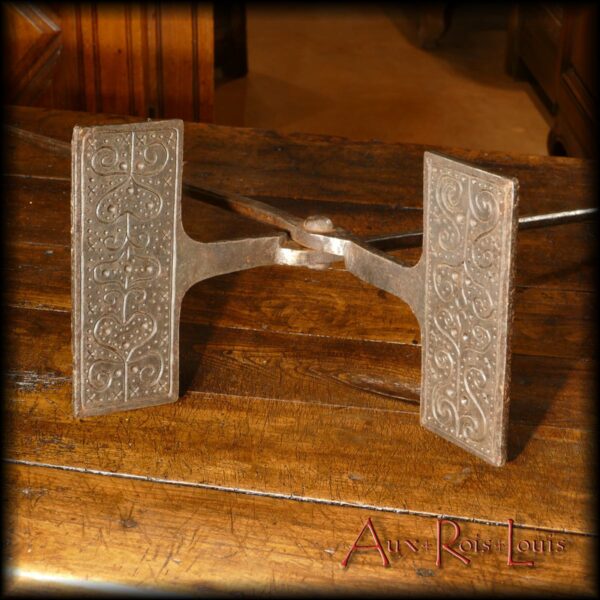
![ME079_P1660184det Cast iron fireback – Louis XV – 18ᵗʰ century – South-West – [ME079]](https://www.aux-rois-louis.com/wp-content/uploads/2022/04/ME079_P1660184det-600x600.jpg)
![Walnut sideboard – 18ᵗʰ century – South-West – [MP030]](https://www.aux-rois-louis.com/wp-content/uploads/2022/04/MP030_740-600x600.jpg)
![Oak wedding chest – 18th century – Auvergne – [MP028]](https://www.aux-rois-louis.com/wp-content/uploads/2022/03/MP028_705x900-600x600.jpg)
![Folk art chestnut chest – 18th century – Béarn – [MP027]](https://www.aux-rois-louis.com/wp-content/uploads/2022/02/MP027_689x800-600x600.jpg)
![Sideboard chest – Louis XV – 18ᵗʰ century – South West France - [ME070]](https://www.aux-rois-louis.com/wp-content/uploads/2021/12/ME070_P1650586x900-600x600.jpg)
![Apothecary mortar in marble - late 18th century - France - [ME068]](https://www.aux-rois-louis.com/wp-content/uploads/2021/12/ME068_P1650572x900-600x600.jpg)
![Two oil jugs - late 18th century early 19th century - Lot Valley, Quercy - [PA062] [PA063]](https://www.aux-rois-louis.com/wp-content/uploads/2021/12/PA062-63_P1650160-600x600.jpg)
![Walnut storage cabinet – 18ᵗʰ century – France – [ME066]](https://www.aux-rois-louis.com/wp-content/uploads/2021/11/ME066_P1650134x900-600x600.jpg)
![Walnut sideboard with scallop shell – Louis XV – 18th century – Lot Valley – [ME067]](https://www.aux-rois-louis.com/wp-content/uploads/2021/11/ME067_144-600x600.jpg)

![Jam cabinet in cheery – late 18th century – Périgord – [MP023]](https://www.aux-rois-louis.com/wp-content/uploads/2021/11/MP023_084x900-600x600.jpg)
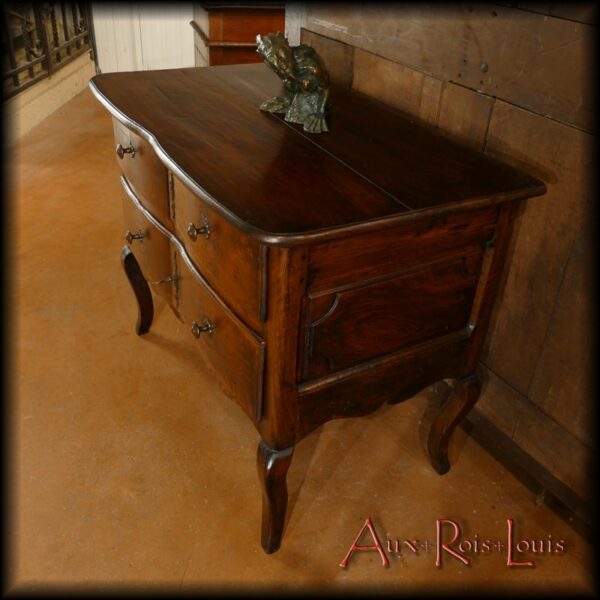
![Half-chest of drawers in cherry wood – 18th century – South West – [ME059]](https://www.aux-rois-louis.com/wp-content/uploads/2021/10/ME059_P1600975-600x600.jpg)


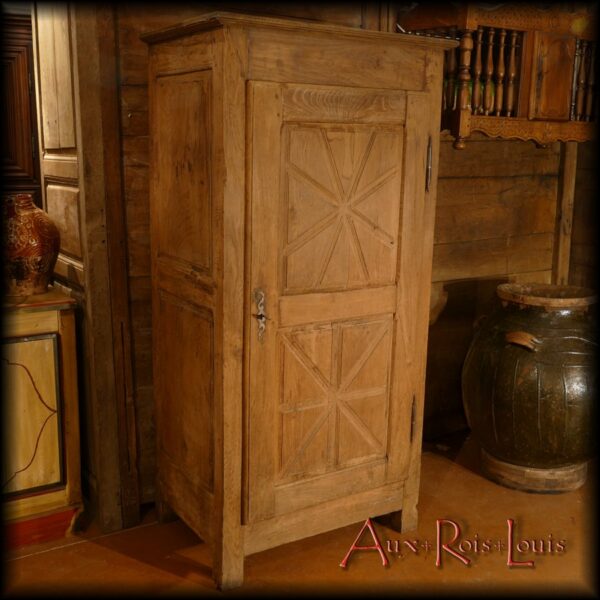


![ME052_P1600504 Curved chest of drawers in nuanced blond walnut – 18ᵗʰ century – Périgord - [ME052]](https://www.aux-rois-louis.com/wp-content/uploads/2021/04/ME052_P1600504-600x600.jpg)
![ME050_464 Shrunken two bodies sideboard in walnut - Louis XIII - Périgord - [ME050]](https://www.aux-rois-louis.com/wp-content/uploads/2021/04/ME050_464-600x600.jpg)
![ME045_P1600266 Louis XVI walnut chest of drawers – Late 18ᵗʰ century – South West – [ME045]](https://www.aux-rois-louis.com/wp-content/uploads/2021/02/ME045_P1600266-600x600.jpg)
![MP015_P1600280 Manka, oak sideboard – 18ᵗʰ century – Basque Country – [MP015]](https://www.aux-rois-louis.com/wp-content/uploads/2021/02/MP015_P1600280-600x600.jpg)
![MP017_P1600257 Oval walnut cellar table – 18ᵗʰ century – Lot – [MP017]](https://www.aux-rois-louis.com/wp-content/uploads/2021/02/MP017_P1600257-600x600.jpg)
![ME047_P1600242 Cherry wood sideboard – Louis XV Regency – 18ᵗʰ century – Aveyron – [ME047]](https://www.aux-rois-louis.com/wp-content/uploads/2021/01/ME047_P1600242-600x600.jpg)
![ME039_P1600103 Louis XVI walnut chest of drawers – Late 18ᵗʰ century – Sud-Ouest – [ME039]](https://www.aux-rois-louis.com/wp-content/uploads/2020/11/ME039_P1600103-600x600.jpg)
![ME044_184 Pantalonnière cupboard in cherry wood – Louis XIV – 18ᵗʰ century – Gironde – [ME044]](https://www.aux-rois-louis.com/wp-content/uploads/2020/11/ME044_184-600x600.jpg)
![ME043_P1600159 Louis XV style “homme-debout” in walnut - 18ᵗʰ century - Périgord - [ME043]](https://www.aux-rois-louis.com/wp-content/uploads/2020/11/ME043_P1600159-600x600.jpg)
![ME038_670 Curved chest of 4 drawers in walnut – 18ᵗʰ century – Rhône Valley [ME038]](https://www.aux-rois-louis.com/wp-content/uploads/2020/09/ME038_670-600x600.jpg)





![Oil jar – 18ᵗʰ century – Auvergne Oil jar – 18ᵗʰ century – Auvergne – [PA008]](https://www.aux-rois-louis.com/wp-content/uploads/2022/07/PA008_N008_P1340558c1200-600x600.webp)
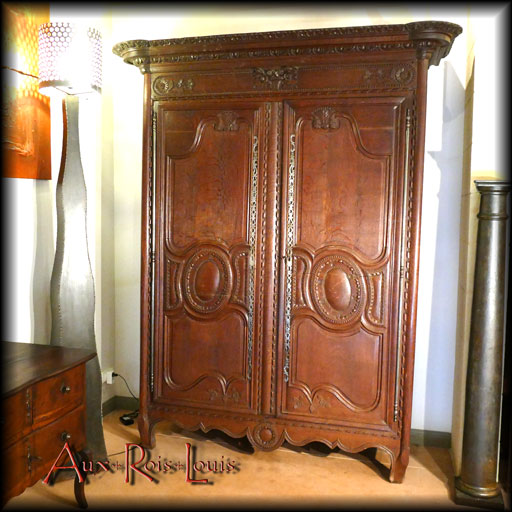
![Walnut wood chest – 18ᵗʰ century – Bordeaux Region Walnut wood chest – 18ᵗʰ century – Bordeaux Region – [ME005]](https://www.aux-rois-louis.com/wp-content/uploads/2022/07/ME005_N04_P1350548_2-600x600.webp)
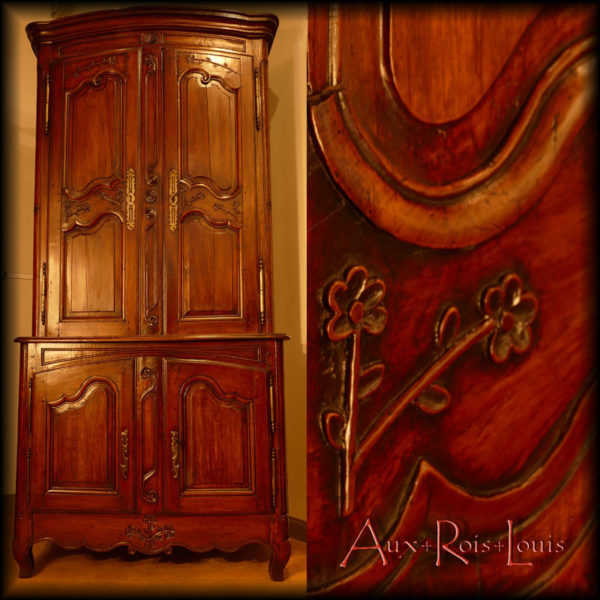


![Walnut coffer – 18ᵗʰ century – Périgord Walnut coffer – 18ᵗʰ century – Périgord – [ME010]](https://www.aux-rois-louis.com/wp-content/uploads/2022/07/ME010_N10_P1500391-600x600.webp)